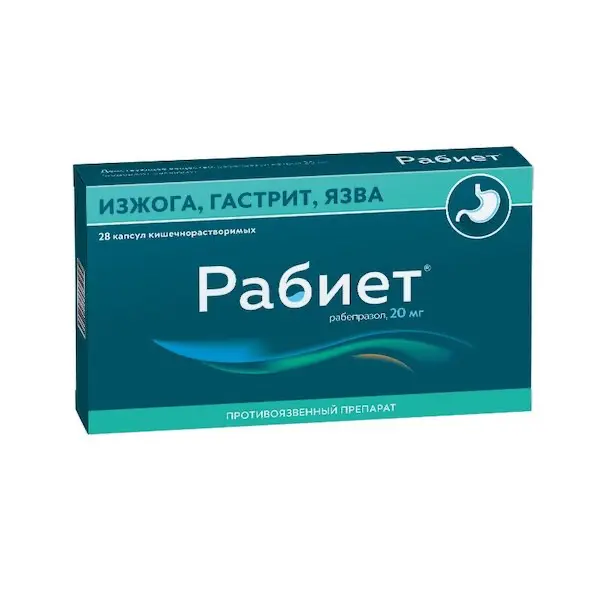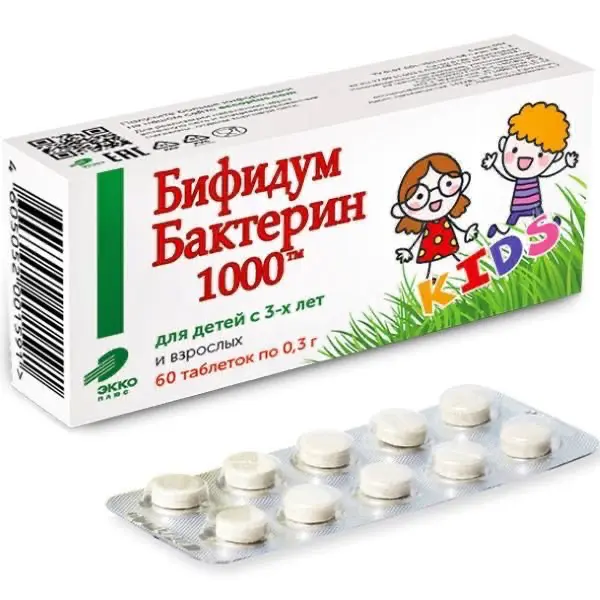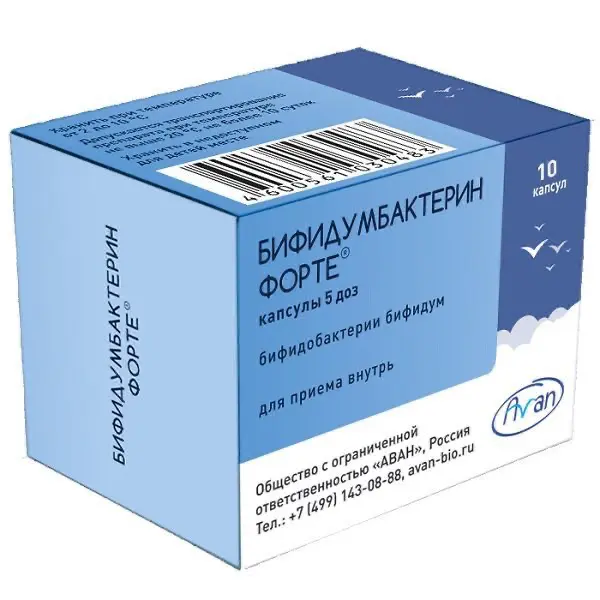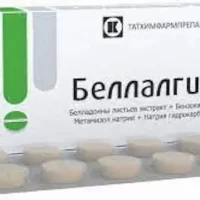Description
Rabiet Pharmacodynamics
Mechanism of action
Rabeprazole sodium belongs to the class of antisecretory compounds, benzimidazole derivatives. Rabeprazole sodium inhibits gastric juice secretion by specifically inhibiting H+/K+ ATPase on the secretory surface of gastric parietal cells. The H+/K+ ATPase is a protein complex that functions as a proton pump; thus, sodium rabeprazole is a proton pump inhibitor in the stomach and blocks the final stage of acid production. This effect is dose-dependent and results in suppression of both basal and stimulated acid secretion regardless of the stimulus. Rabeprazole sodium has no anticholinergic properties.
Antisecretory action
After oral administration of rabeprazole sodium at a dose of 20 mg, the antisecretory effect develops within 1 hour. Inhibition of basal and stimulated acid secretion 23 hours after the first dose of rabeprazole sodium is 69% and 82% respectively and continues up to 48 hours. This duration of pharmacodynamic action is much longer than that predicted by the half-life (T1/2) (approximately 1 hour). This effect can be explained by the prolonged binding of the drug substance to the H+/K+ ATPase of the gastric parietal cells. The magnitude of the inhibitory effect of rabeprazole sodium on hydrochloric acid secretion reaches a plateau after three days of taking rabeprazole sodium. When discontinued, secretory activity is restored within 1-2 days.
Effect on plasma gastrin levels
In clinical trials, patients took 10 or 20 mg of rabeprazole sodium daily for a treatment duration of up to 43 months. Plasma gastrin concentrations were elevated during the first 2 to 8 weeks, reflecting an inhibitory effect on acid secretion. Gastrin concentrations returned to baseline levels usually within 1-2 weeks after discontinuation of treatment.
Effects on enterochromaffin-like cells
In study of human gastric biopsy specimens from the antrum and the stomach floor of 500 patients treated with rabeprazole sodium or the comparison drug during 8 weeks no steady changes in morphological structure of enterochromaffin-like cells, gastritis severity, frequency of atrophic gastritis, intestinal metaplasia or spread of Helicobacter pylori infection were found.
In a study involving more than 400 patients receiving rabeprazole sodium (10 mg/day or 20 mg/day) for up to 1 year, the incidence of hyperplasia was low and comparable to that of omeprazole (20 mg/kg). No cases of adenomatous changes or carcinoid tumors observed in rats were reported.
Other effects
No systemic effects of rabeprazole sodium with respect to the central nervous system, cardiovascular or respiratory systems have been found at this time. It has been shown that rabeprazole sodium when administered orally in 20 mg for 2 weeks has no effect on thyroid function, carbohydrate metabolism, blood concentration of parathyroid hormone, and concentrations of cortisol, estrogen, testosterone, prolactin, glucagon, follicle stimulating hormone (FSH), luteinizing hormone (LH), renin, aldosterone and somatotropin hormone.
Indications .
– Gastric ulcer in the acute stage and anastomosis ulcer;
– Acute duodenal ulcer;
– erosive and ulcerative gastroesophageal reflux disease or reflux esophagitis:
– Maintenance therapy for gastroesophageal reflux disease;
– Non-erosive gastroesophageal reflux disease;
– Zollinger-Ellison syndrome and other conditions characterized by pathological hypersecretion;
– in combination with appropriate antibacterial therapy for eradication of Helicobacter pylori in patients with peptic ulcer disease.
– Acute duodenal ulcer;
– erosive and ulcerative gastroesophageal reflux disease or reflux esophagitis:
– Maintenance therapy for gastroesophageal reflux disease;
– Non-erosive gastroesophageal reflux disease;
– Zollinger-Ellison syndrome and other conditions characterized by pathological hypersecretion;
– in combination with appropriate antibacterial therapy for eradication of Helicobacter pylori in patients with peptic ulcer disease.
Contraindications
– hypersensitivity to rabeprazole, substituted benzimidazoles or excipients of the drug;
– pregnancy;
– period of breast-feeding;
– under 12 years of age;
– sucrose/isomaltase deficiency, fructose intolerance, glucose-galactose malabsorption.
– pregnancy;
– period of breast-feeding;
– under 12 years of age;
– sucrose/isomaltase deficiency, fructose intolerance, glucose-galactose malabsorption.
Dosage and administration method
- In duodenal ulcer in the acute stage it is recommended to take orally 20 mg once a day. Duration of treatment is from 2 to 4 weeks. If necessary, the treatment duration can be extended for 4 more weeks.
- In treatment of erosive gastroesophageal reflux disease or reflux esophagitis it is recommended to take orally 20 mg once a day. The duration of treatment is from 4 to 8 weeks. If necessary, the duration of treatment may be increased by 8 weeks.
- In maintenance therapy of gastroesophageal reflux disease P’erd) it is recommended to take orally 20 mg once a day. The duration of treatment depends on the patient’s condition.
- In non-erosive gastroesophageal reflux disease (PERE) oez esophagitis, it is recommended to take orally 20 mg once daily.
- If symptoms persist after four weeks of treatment, further evaluation of the patient should be performed.
- Once the symptoms have resolved, the drug should be taken orally once daily on demand to prevent further onset of symptoms.
- For treatment of Zollinger-Ellison syndrome and other conditions characterized by pathological hypersecrea. the dose is chosen individually. The initial dose is 60 mg per day, then the dose is increased and the drug is prescribed up to 100 mg per day at a single dose or 60 mg twice a day. For some patients, fractional dosing is preferable. Treatment should be continued as clinically necessary. In some patients with Zollinger-Elison syndrome, the duration of treatment with rabeprazole was up to one year.
- For eradication of Helicobacter pylori it is recommended to take 20 mg twice a day orally according to a certain scheme with an appropriate combination of antibiotics. The duration of treatment is 7 days.
- Patients with renal and hepatic insufficiency
- Dosage adjustment is not required in patients with renal failure.
- In patients with hepatic insufficiency of mild to moderate degree of severity the concentration of rabeprazole in blood is usually higher than in healthy patients.
- Caution should be exercised when prescribing Rabiet in patients with severe hepatic insufficiency.
- Elderly patients No dose adjustment is required.
- Children
- The safety and efficacy of rhapsirazole sodium 20 mg for short-term (up to 8 weeks) treatment of GERD in children aged 12 years and older is supported by extrapolation of results of adequate and well-controlled studies supporting efficacy of rhapsirazole sodium for adults and safety and pharmacokinetics studies for pediatric patients. The recommended dose for children aged 12 years and older is 20 mg once daily for up to 8 weeks.
- Safety and efficacy of rhabsirazole sodium for GERD treatment in children younger than 12 years old has not been established. Safety and efficacy of rhabsirazole sodium for other indications has not been established for pediatric patients.





